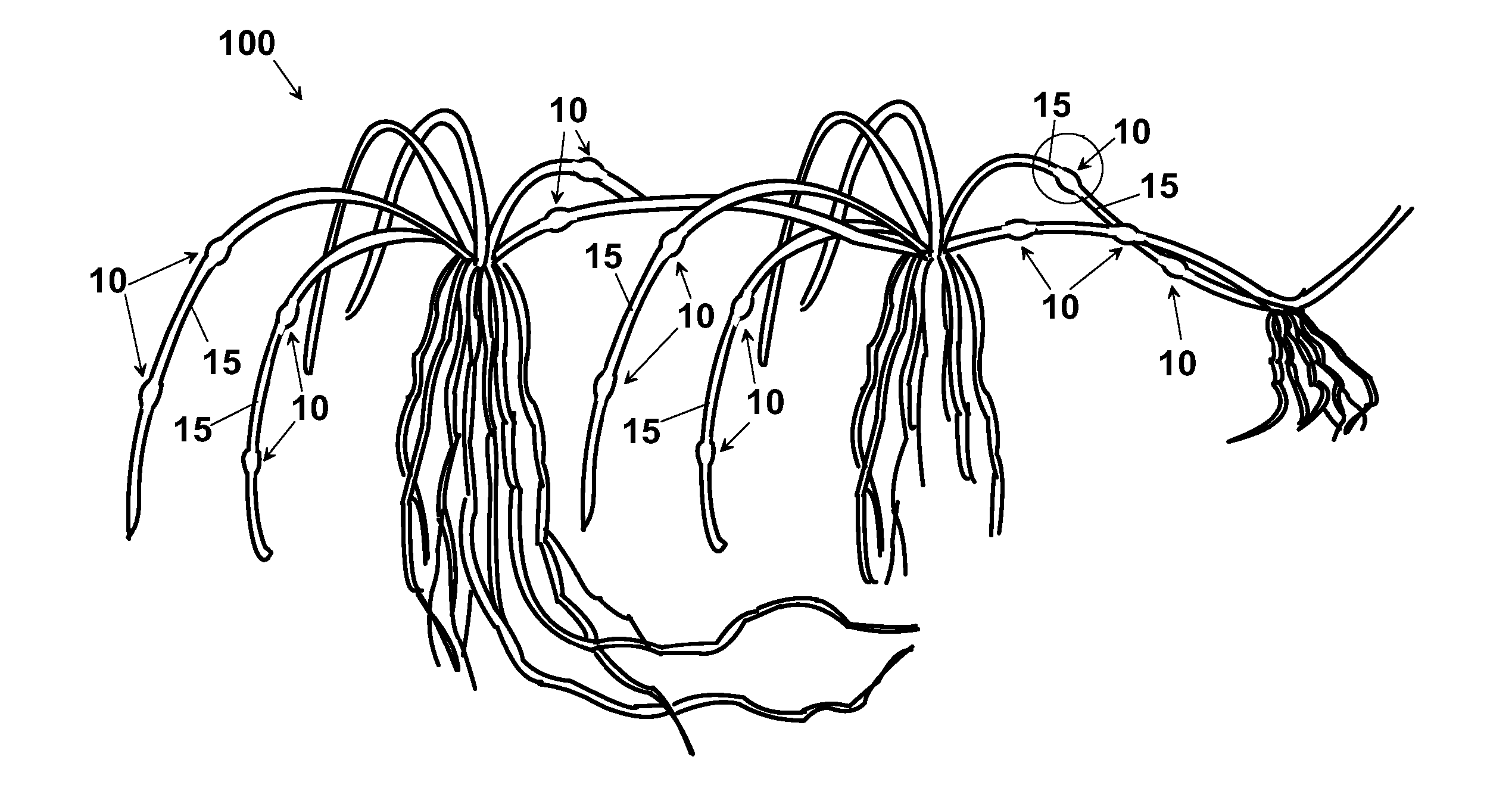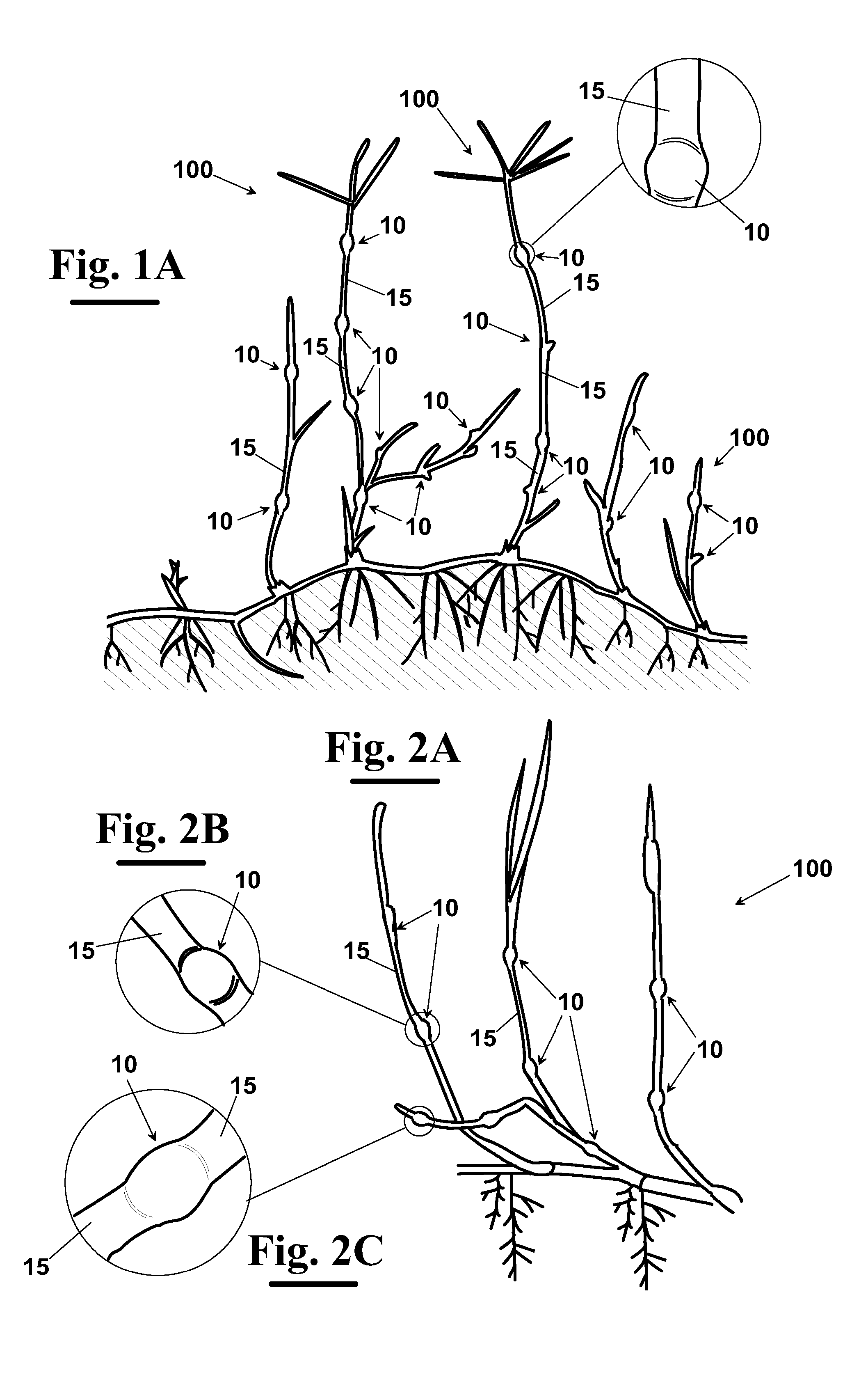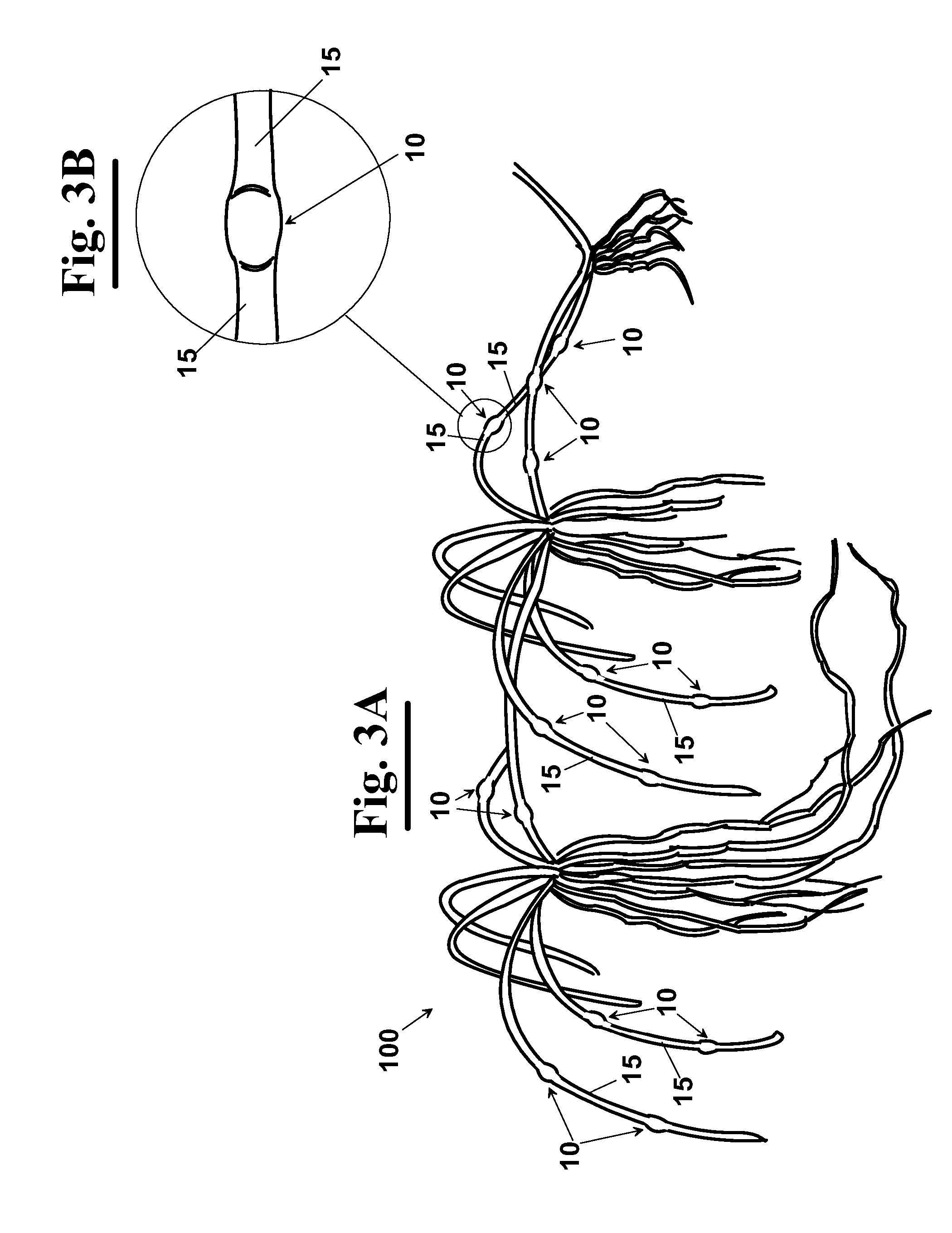Method for making a turf of stoloniferous or rhizomatous plant species
a technology of stoloniferous or rhizomatous plants and turf, which is applied in the directions of biocide, transplantation, angiosperm/flowering plants, etc., can solve the problems of long time required to complete the turf, difficult preservation and transportation, and high cost, so as to reduce the content of oxygen and improve the preservation
- Summary
- Abstract
- Description
- Claims
- Application Information
AI Technical Summary
Benefits of technology
Problems solved by technology
Method used
Image
Examples
Embodiment Construction
[0080]In the FIGS. 1A, 2A and 3A three different types of plants 100 are shown belonging to rhizomatous or stroloniferous plant species used as starting mother plants, for making a turf through the method according to the invention. In particular, as shown in detail in FIGS. 1B, 2B, 2C, 3B, 4B and 4C, mother plant 100 has a plurality of nodes 10 and of internodes 15, i.e. plant portions set between two successive nodes 10.
[0081]As well known, nodes 10 are points of the axis of the bud which grow into leaves, whereas internodes 15 are zones of the bud that separate nodes 10 from each other. The length of the stem is due substantially to the internodes because the cells of the nodes are short.
[0082]According to the invention, once achieved a predetermined vegetative growth, mother plant 100 (FIG. 5A) is cut (FIG. 5B) obtaining a plurality of portions, or cuttings 20 (FIG. 5C). Each cutting 20 consists of a node portion, or node, 10 and of an internode of length set between 1 mm and 10...
PUM
 Login to View More
Login to View More Abstract
Description
Claims
Application Information
 Login to View More
Login to View More - R&D
- Intellectual Property
- Life Sciences
- Materials
- Tech Scout
- Unparalleled Data Quality
- Higher Quality Content
- 60% Fewer Hallucinations
Browse by: Latest US Patents, China's latest patents, Technical Efficacy Thesaurus, Application Domain, Technology Topic, Popular Technical Reports.
© 2025 PatSnap. All rights reserved.Legal|Privacy policy|Modern Slavery Act Transparency Statement|Sitemap|About US| Contact US: help@patsnap.com



